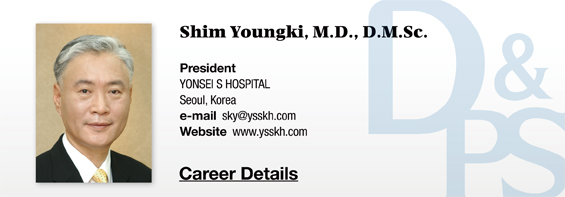Conclusion
Foam sclerotherapy is an effective treatment method for varicose veins. It uses a lower dose and concentration compared to liquid injection but brings excellent sclerosing effect. Effective venous contraction has been reported to follow foam injection. Moreover, tissue damage is minimal even if foam is extravasated. The Tessari method is most widely used, where the doctor produces the foam himself. This method of foam production is highly practical and effective. However, as the injected drug is formulated at each private practice or hospital, there is the problem of unclear liability when an accident occurs. Currently, manufacturers of sclerosing agents have not officially recommended foam sclerotherapy. The recommended technique is to inject low concentration solutions in small vessels such as in telangiectasia.
Foam sclerotherapy is a relatively novel method introduced at an international society and therefore, there is insufficient clinical data on the actions of air inside the human body. Despite the above mentioned benefits, there is no literature on high dose injections. As little is known about the potential actions of the foam in the human body, caution should be taken when applying this new method.
Treatment techniques of sclerotherapy
Although general therapeutic guidelines of sclerotherapy have been established, the therapeutic process and outcome may differ due to the doctor’s skills or equipment used.
Test preparation
Whether ultrasound or doppler is used, it is advisable to dress the patient in loose shorts so that the inguinal regions are easily accessible during the examination. As tight girdles or corsets, etc. can interfere diagnosis, it is advisable to remove all shape correcting undergarments, except for regular underwear.
Many patients regularly apply body lotion on their legs. As lotion can reduce adhesiveness of the therapeutic bandages, patients should be instructed to not put on lotion on their legs prior to the hospital visit. Some patients have excessive hair that reduces the visibility of blood vessels. Shaving the legs on the day of the treatment may cause erythema or scratches that can interfere with accurate diagnosis. These patients should be instructed to shave their legs 3-4 days before the scheduled visit. Minimize vaso vagal reflux by instructing the patient to reduce food intake on the day of treatment or examination.
History taking and physical examination
Each patient should be thoroughly examined including medical history even if the patient has only very mild telangiectasia. If no abnormality is found on physical examination, the patient should be closely enquired for medical history. If the patient has history of previous varicose vein surgery, he/she should be examined more closely. In case of positive family history, ultrasound examination of cardinal veins should be performed even if only a few varices are visible.
Once the diagnosis is complete and the patient is eligible for sclerotherapy, the doctor should explain the process, limits, complications, possibility of recurrence, side effects, and therapeutic plan of sclerotherapy, etc. in close detail and collect a signed consent form from the patient.
[Advertisement] Selene(Diode hair removal Laser) – Manufacturer: (www.senbitec.com)]
Clinical photographs
Photographs of the treatment region must be taken before treatment. Patients tend to add more demands after the therapy is begun. They also have new complaints such as “New varices developed,” “I see more blood vessels,” or “my legs hurt and tingle because of blocked circulation,” etc. It helps both the doctor and patient to see the pre-treatment photographs as evidence to assess the progress as it is difficult to accurately remember the conditions before treatment. I take pictures of all my patients. It is easy to record and sort the images according to the name, date and diagnosis into the computer using a digital camera.
Benefits of photographs are as following.
Photographs serve as records of the treatment process. They also help determine the cause of side effects as well as distinguish treatment reactions from pre-existing scars, moles and skin conditions. Photographs allow patients to observe the long-term progress of the treatment and improve their understanding.
When taking photographs, the patient should be in a standing position. This makes the affected veins more clearly visible. It is not necessary to include both legs in one photograph. I prefer close-up photos of lesions on the anterior and posterior thigh, anterior and posterior calf, and the lateral side of the thigh if needed. I take about 6-12 photographs per patient before treatment and take close-ups when necessary. As most of the digital cameras have automatic exposure and focus, it is important to pay attention to the ambient lighting. I slightly dim the ceiling lights to resemble the brightness of a regular office and use the camera flashlight. I set the lesion area against the dark green or blue background to create clear contrast. After taking photographs, I immediately check the quality of images on the digital camera and retake them if the quality is low. I use Nikon D70s and manually adjust focus. This is because auto focus of close-up is difficult with telangiectasia. I save the photographs onto my computer with the patient name and birthdate as the file name.
-To be continued-





















